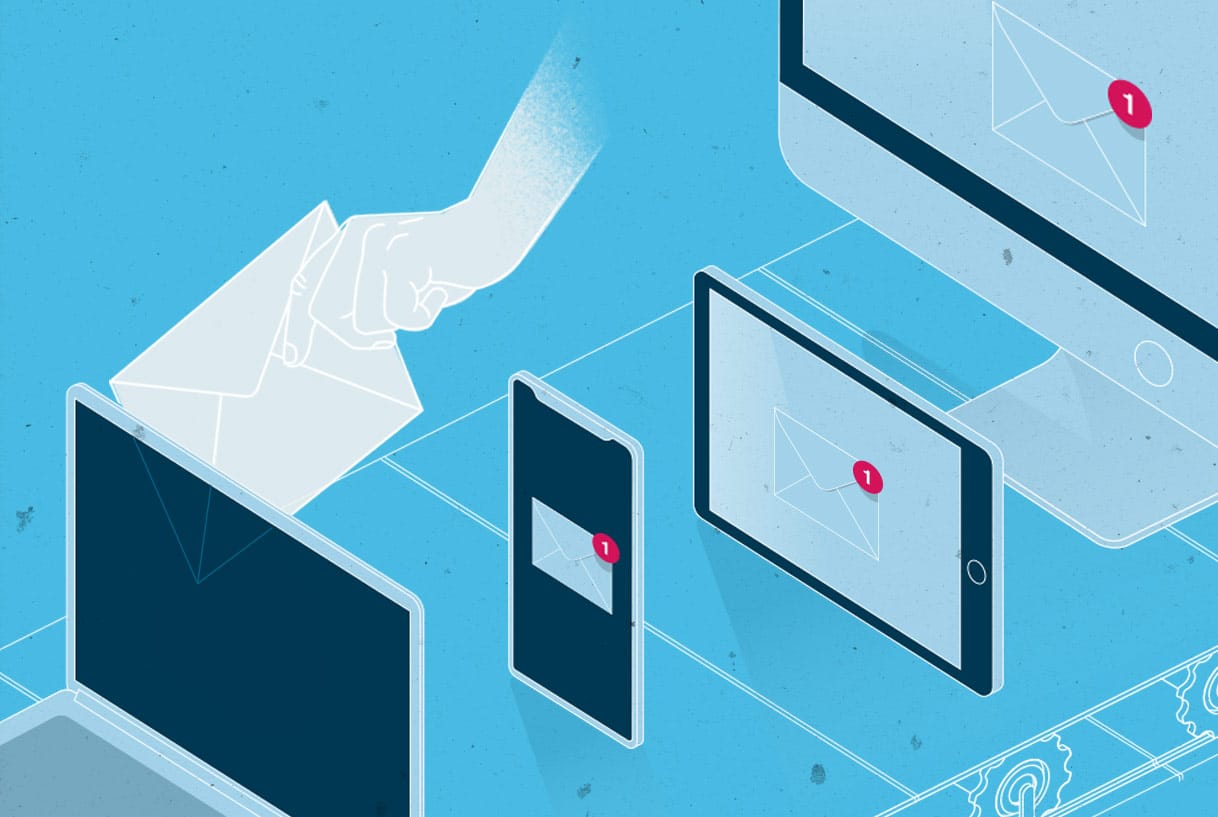Email Marketing Best Practices Illustrated [INFOGRAPHIC]
Email is the most effective marketing stream (after organic search traffic), generating an average of $44 for every $1 spent. But email’s success is also its downfall. It is highly competitive. Out of all the emails we send, only around 21% get opened. This means you have to compete to stand out. But how?
In this illustrated guide, we take you step-by-step through what you need to do to make your email marketing efforts work. We cover all the most important practices you need to undertake, from growing your mailing list, to drafting your campaigns, to when and how often to send.

Follow this guide to establish a foundation upon which you can regularly refine and optimize your email marketing for continued success.
1. Grow Your Mailing List
The addresses you collect on your mailing list will become your community of subscribers. These are the people most likely to engage with your emails because they have shown interest in your business before. The more subscribers you have on your list, the more reach and impact you will have with each email campaign you send.
Incentivize Leads
Potential customers are unlikely to offer up their email addresses to help you with your marketing efforts. You need to give them an incentive. This could be an e-book, a white paper, or a free calendar. It should be particular to your target audience, address their wants and needs, interests, and “pain points” to draw subscribers in.
Encourage Sharing
Emails that include social sharing buttons get 115% higher click-through rates than those without. If you work hard to curate great content for your customers, let them share it with their friends. Facebook and Twitter buttons get you the biggest boosts, so be sure to include these “big guns” in your sharing arsenal.
Generate Recommendations
“<NAME> Recommended You” is one of the highest performing subject lines. So use it! Offer something special to all your subscribers who recommend a friend a gift card or a high discount. Then use this subject line to generate curiosity to get your emails opened and turn those friends into customers.
2. Segment Your List
Segmenting your mailing list is essential. A 760% increase in email revenue is up for grabs when you split your list into more manageable chunks. Grouping subscribers by the right characteristics allows you to target them with content particular to their customer type, creating the best conditions for engagement.
Segment by Interest
Segmenting your list by interest means you can target your customers with relevant products and services. If subscribers have previously shown interest in the “Clothing” department of your online store, put them on one list. If they have only bought “Home” items, put them on another. You can adapt your campaign emails to promote different products to each segment, reflecting these different interests.
Segment by Age
Sorting your list by age not only means you can send dedicated age-specific products through to the right audiences. You can also adjust your tone and level of formality, just as you would when speaking to people of different ages in everyday life. Communicating familiarly with customers will put them more at ease and establish better rapport for higher returns.
Segment by Gender
Many retail products appeal to a specific gender, many are completely gender-limited. Segmenting by gender enables you to send the right promotions through to the right people. It means you won’t be cross-posting highly irrelevant content (male-specific products to females, women’s products to men) and losing subscribers as a result.
3. Curate Email Content
As with a brick-and-mortar store, we only buy from one company over another in the digital domain if we see some benefit. Your subscribers will buy from you over your competitors, if they feel you offer them value that goes beyond the provision of goods and services. Curating and disseminating quality, relevant content, as information, entertainment, or exclusive offers, is the best way to generate long-term brand loyalty.
Blog Posts and Articles
Blog posts and digestible articles have become the most useful resources for practical people. They provide exactly what the reader needs to know in a concise way, using clear vocabulary. Common formats include the popular “Listicle” as well as “How-To” and “Step-By-Step” variations. Sharing these with your subscribers can be a great way to become a consistent positive presence in their world.
Discounts and Offers
An exclusive offer shows your subscribers you value them as well as easing them into a purchase. Discounts and offers should follow industry and seasonal trends to target the best opportunities for maximizing returns. But don’t be afraid to send your subscribers a welcome surprise when they are not expecting it.
Multimedia Content
Include video in your email and you could increase open rates by up to 19%. The videos you send could be webinars, short documentaries, or interviews with influential people. You can also send other multimedia content, including infographics and screensavers, to spread the positive influence of your brand.
4. Draft Your Template
Email templates are a revolution in email marketing. They not only save you time but ensure consistency in design across your campaigns. Repurpose your templates and iteratively adapt them for each campaign you send. The familiar style and format of your emails will make it easy for subscribers to find the information they need most.
Personalize Your Subject Lines
When you draft your templates, personalize your subject lines by inserting a code to be replaced with individual subscribers’ names. Emails with personalized subject lines have 29% higher open rates than those without. Make people feel special by treating them as a name and not a number on a list.
Write Body Text
It is important to have a good text-image ratio when you are sending opt-in emails. Too many images and too little text can get you flagged by spam filters. Craft some clear and simple sentences to acknowledge your recipients, and explain the contents of your email so you aren’t considered “all design and no substance.”
Insert Curated Email Content
Remember, the goal of each of your emails is to engage customers positively and filter them through to a purchase. Insert your carefully curated content to generate the additional value you need to make a positive impact. Cater for each segment of your list with relevant, targeted content.
5. Hit Send
When you have drafted you first templates and tailored them with content for each segment of your audience, you are ready to hit send.
When to Send?
According to studies, around 10 a.m. weekdays is a good time to send your emails. At 10 a.m. you can drop your emails into people’s inboxes after they have finished cleaning them out. This is also about the time most people take the time to browse on their mobile while they drink their mid-morning coffee.
How Often to Send?
Connecting with your subscribers at least twice monthly is good practice. Any less than this and your recipients will become “emotionally unsubscribed.” Any more than 5-6 emails a month and you are in danger of annoying them. Two regular emails (or newsletters) and one promotional email (exclusive offer) each month should be enough to gain initial traction.
Know Your Data
As you send out your campaigns you will begin to gather data on their success. Though these best practices are proven to work, there is no one better to understand your customers than you. Look at which campaigns did better and worse with particular segments of your audience, and continue to optimize your emails to meet the needs of your demographic.











